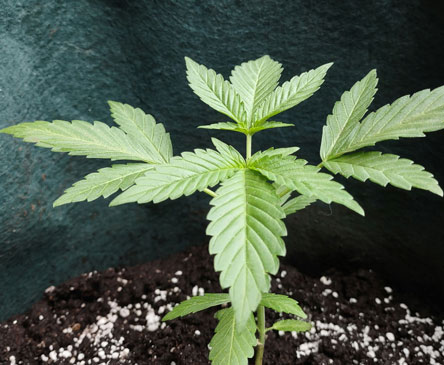Germany Cannabis Cultivation Market: Robust Growth Charting a New Era in Medical CannabisThe Cannabis Cultivation Market in Germany is undergoing a dynamic transformation, driven by evolving medical landscapes, regulatory changes, and growing patient demand. Valued at USD 4,016 million in 2024, this

The Cannabis Cultivation Market in Germany is undergoing a dynamic transformation, driven by evolving medical landscapes, regulatory changes, and growing patient demand. Valued at USD 4,016 million in 2024, this market is forecasted to skyrocket to an impressive USD 17,716 million by 2030, reflecting a robust compound annual growth rate (CAGR) of 28.5%. This upward trajectory highlights Germany’s emergence as a critical hub for cannabis cultivation focused on medical and therapeutic applications.
Germany's cannabis industry is unique due to its tightly regulated framework, which ensures that cultivation processes align with stringent quality, safety, and pharmaceutical-grade standards. This meticulous regulation is overseen by the Federal Institute for Drugs and Medical Devices (BfArM), reinforcing patient trust in cannabis as a legitimate treatment alternative. Over recent years, Germany’s government policies have shifted progressively to support medical cannabis adoption, resulting in a surge of medical prescriptions and a broadening patient base.
Medical Cannabis: The Growth Engine
The rise in medical cannabis prescriptions has been a key driver of this market’s growth. Patients suffering from chronic pain, neurological disorders such as multiple sclerosis, and side effects of chemotherapy have increasingly turned to cannabis-based therapies. The expanding acceptance among healthcare professionals and patients alike has fueled demand substantially, prompting cultivators to ramp up domestic production. This is significant because domestically grown cannabis reduces dependence on imports, which historically supplied most of the medical cannabis consumed in Germany. However, despite this growth in local cultivation, imports from countries like Canada, Portugal, and the Netherlands remain essential due to the high demand.
The adoption of advanced cultivation techniques, including hydroponics and climate-controlled indoor growing facilities, has allowed domestic cultivators to meet the rigorous quality standards demanded by German regulatory authorities. As a result, cannabis flowers and buds dominate the market, accounting for over 93% of consumption, due to their versatility and efficacy in delivering therapeutic cannabinoids and terpenes. Other product formats such as oils, tinctures, and capsules hold smaller, niche market shares but are gradually gaining traction as patient preferences diversify.
Market Dynamics and Competitive Landscape
While the German market continues to scale, local growers face stiff competition from well-established international suppliers who benefit from economies of scale and optimized production costs. These exporters bring competitively priced, high-quality cannabis, challenging domestic cultivators to innovate and specialize. German producers differentiate themselves by focusing on pharmaceutical-grade products that comply with Good Manufacturing Practices (GMP) and tailored medical applications, thus solidifying their standing within this specialized segment.
The market's CAGR of 28.5% from 2025 to 2030 underscores the remarkable investment opportunities and growth potential. This expected growth is also spurred by ongoing discussions within the government about potential recreational cannabis legalization, which could vastly expand the cultivation market beyond its current medicinal boundaries. Should legalization materialize, domestic producers will likely face an urgent need to expand production capacities while maintaining strict regulatory compliance.
Strategic Importance of Germany in European Cannabis Market
Germany’s strategic geographic location, established healthcare infrastructure, and advanced agricultural technologies position it as a central player in the European cannabis market. The country’s ability to meet growing domestic and European demand for high-quality, medical-grade cannabis strengthens its role not only as a consumer market but also as a potential exporter within the region’s regulated cannabis ecosystem.
The cannabis cultivation landscape in major cities like Berlin, Frankfurt, and Munich exemplifies the synergy between pharmaceutical research, cultivation, and distribution networks. This integrated approach enhances Germany’s reputation for quality and innovation in cannabis production.
Future Outlook and Opportunities
Looking ahead, the Germany Cannabis Cultivation Market is poised for continued expansion driven by several factors:
- Increasing patient awareness and acceptance of cannabis therapies.
- Technological advancements in controlled cultivation methods.
- Scaling of domestic cultivation to bridge gaps currently filled by imports.
- Potential relaxation of regulatory barriers to include recreational cannabis markets.
- Emergence of diverse product offerings catering to varying patient needs.
Moreover, the evolving market landscape will likely attract further investments in research and development, focusing on cannabinoid-based medical solutions and novel delivery mechanisms. Such innovations will not only improve patient outcomes but will also add new dimensions to market growth and product diversification.
Conclusion
The Germany Cannabis Cultivation Market’s journey from a niche medical sector to a rapidly expanding powerhouse reflects broader global medicinal cannabis trends. With its projected growth from USD 4,016 million in 2024 to USD 17,716 million by 2030 at a CAGR of 28.5%, the market evidences strong fundamentals rooted in regulatory rigor, medical necessity, and technological sophistication. Both domestic cultivators and international players recognize Germany’s pivotal role in the evolving cannabis ecosystem, making it a key market to watch for innovation, investment, and long-term success.